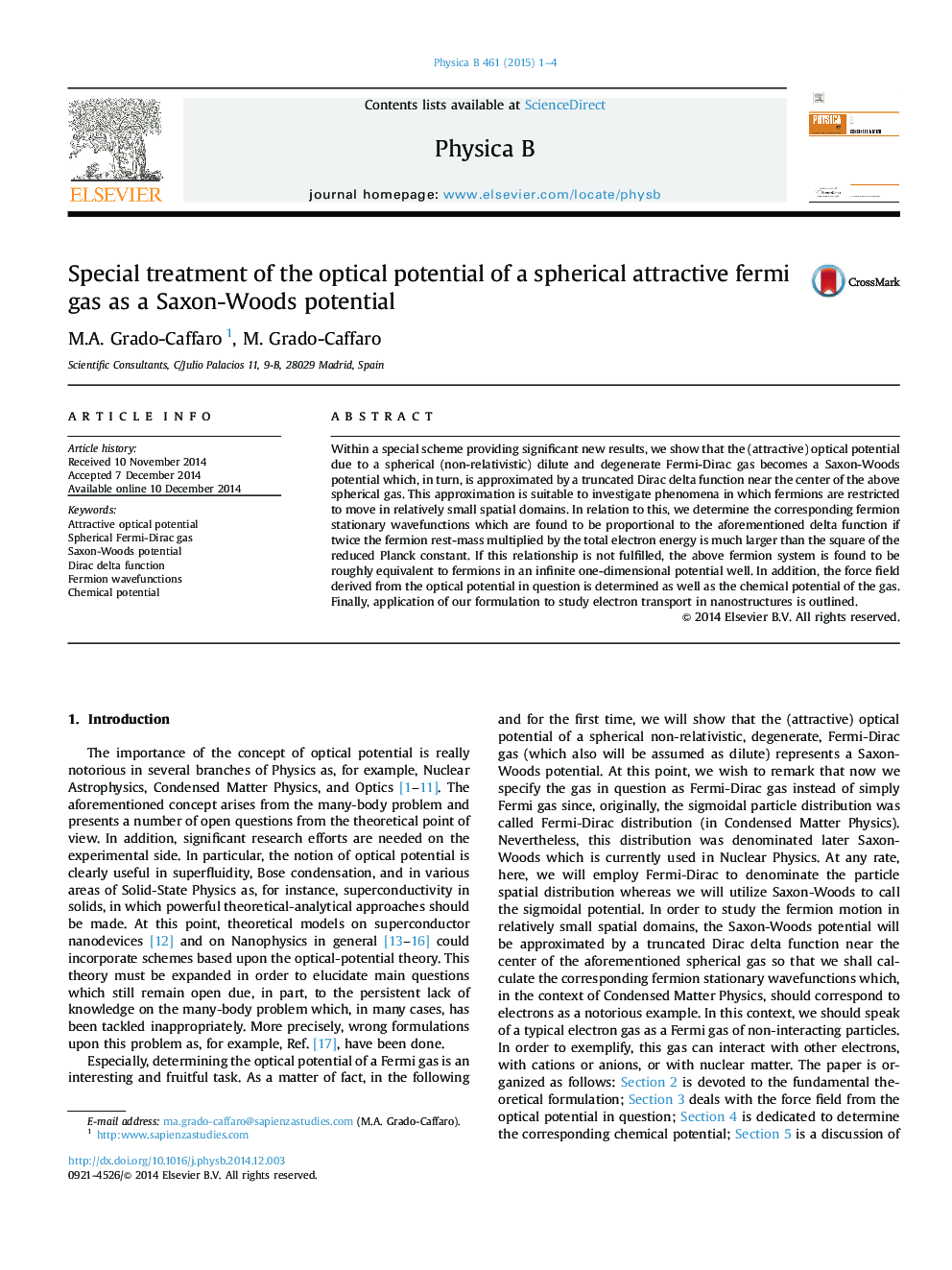| Article ID | Journal | Published Year | Pages | File Type |
|---|---|---|---|---|
| 1809029 | Physica B: Condensed Matter | 2015 | 4 Pages |
Abstract
Within a special scheme providing significant new results, we show that the (attractive) optical potential due to a spherical (non-relativistic) dilute and degenerate Fermi-Dirac gas becomes a Saxon-Woods potential which, in turn, is approximated by a truncated Dirac delta function near the center of the above spherical gas. This approximation is suitable to investigate phenomena in which fermions are restricted to move in relatively small spatial domains. In relation to this, we determine the corresponding fermion stationary wavefunctions which are found to be proportional to the aforementioned delta function if twice the fermion rest-mass multiplied by the total electron energy is much larger than the square of the reduced Planck constant. If this relationship is not fulfilled, the above fermion system is found to be roughly equivalent to fermions in an infinite one-dimensional potential well. In addition, the force field derived from the optical potential in question is determined as well as the chemical potential of the gas. Finally, application of our formulation to study electron transport in nanostructures is outlined.
Related Topics
Physical Sciences and Engineering
Physics and Astronomy
Condensed Matter Physics
Authors
M.A. Grado-Caffaro, M. Grado-Caffaro,
